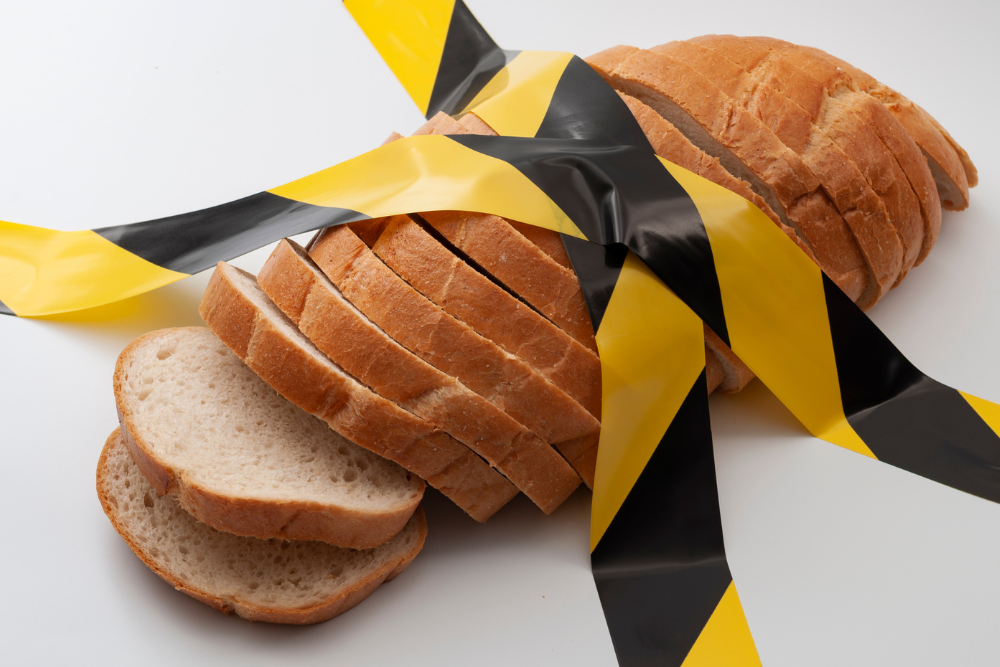
Many people go gluten-free in hopes of feeling better. Yet, few realize the dangers of a gluten-free diet that can easily be avoided given the proper knowledge upfront. Please discuss any dietary changes with your doctor or nutritionist. Please see my disclosures.
When someone is diagnosed with celiac disease, non-celiac gluten sensitivity, or an autoimmune disease and suddenly has to go on a strict gluten-free diet, they might find the transition easy, at least at first.
They know they must avoid gluten, a protein found in wheat, rye, barley, and sometimes oats. There are many products labeled “gluten-free” at the grocery store, making it easy to trade pizza or bread for a gluten-free version of pizza or bread instead.
However, before going gluten-free, someone must become hyper-aware of the following five dangers of a gluten-free diet so their newfound diet doesn’t do more harm than good.
Danger #1: Lack of Fiber
Wheat contains important fiber and prebiotics that must be replaced when you remove wheat from your diet.
A study published in Food & Nutrition found that gluten-free products contain less protein and fiber and higher levels of saturated fat, carbohydrates, and salt compared to gluten-containing products.
Without fiber, your digestive system becomes a mess. Fiber is essential for regulating bowel movements and lowering the risk of constipation, hemorrhoids, colon cancer, and inflammation. Fiber also helps control blood sugar levels, cholesterol, and weight.

The average person needs about 25-30 grams of fiber each day; however, getting this level of fiber on a gluten-free diet is challenging because wheat, rye, and barley are primary sources of fiber in the Standard American Diet.
Eat More Fiber
When switching to a gluten-free diet, it’s essential to look to gluten-free sources of fiber instead. Good sources of dietary fiber include:
- Gluten-free whole grains and flours, including oats (labeled gluten-free), quinoa, wild rice, coconut flour, almond flour, and brown rice flour.
- Legumes, nuts, and seeds, including beans, flax seeds, lentils, chickpeas, almonds, and peanuts.
- Fruits, including berries, apples, bananas, and pears.
- Vegetables, including peas, broccoli, potatoes (with skin), cauliflower, and carrots.
Remember, most gluten-free packaged foods are made using white rice flour, which lacks fiber and nutrition. Look instead for gluten-free products made from whole grains, beans, and seeds to ensure you get adequate daily fiber.
Eat Foods that Contain Inulin
Wheat is high in inulin, a prebiotic fiber that supports good gut bacteria and is essential for good gut health.
One study shows that prebiotic fibers are essential in “increasing the numbers of bifidobacteria in the colon, increasing calcium absorption, increasing fecal weight, shortening gastrointestinal transit time, and possibly lowering blood lipid levels.”
There are plenty of gluten-free prebiotic-rich sources beyond wheat, including:
- Root vegetables, including potatoes, sweet potatoes, carrots, and beets
- Onions, leeks, and garlic
- Fruits, including bananas and watermelon
- Vegetables, including artichokes, Brussels sprouts,
- Chickpeas, lentils, and beans
- Oats (must be labeled gluten-free – see Are Oats Gluten Free?)
- Almonds
- Flax seeds
For more information about the importance of fiber and gluten-free sources of fiber, read Why Fiber Matters and a High-Fiber Gluten-Free Foods List. The USDA also offers a list of food sources that contain dietary fiber.
Danger #2: Risk of Nutritional Deficiencies
Typically, when someone is diagnosed with a gluten disorder, particularly celiac disease, their nutrient tank is depleted because gluten has impaired the function of their small intestine, making nutrient absorption impossible. Once they stop eating gluten, their small intestine heals, and nutrient absorption resumes.
However, many people on a gluten-free diet still suffer from nutrient deficiencies long after they have healed because they haven’t taken steps to boost the nutrient density of their diet, according to this study.
Another study of women with celiac disease found that patients following a strict gluten-free diet didn’t meet the recommended dietary nutrient intake in all micro and macro-nutrients, nor did these women have sufficient levels of folate, iron, calcium, and Vitamin D.
Did you know that U.S. companies are required to fortify cereals and cereal grains, including wheat, with vitamins and minerals, including vitamin B, vitamin D, iron, folic acid, and zinc? They’ve been doing this for 80 years to ensure Americans get these essential nutrients.
However, many gluten-free cereals are not fortified because the U.S. does not require specific grains, such as amaranth, buckwheat, quinoa, rice flour, oat flour, tapioca flour, almond flour, teff, sorghum, or corn masa flour, to be fortified.
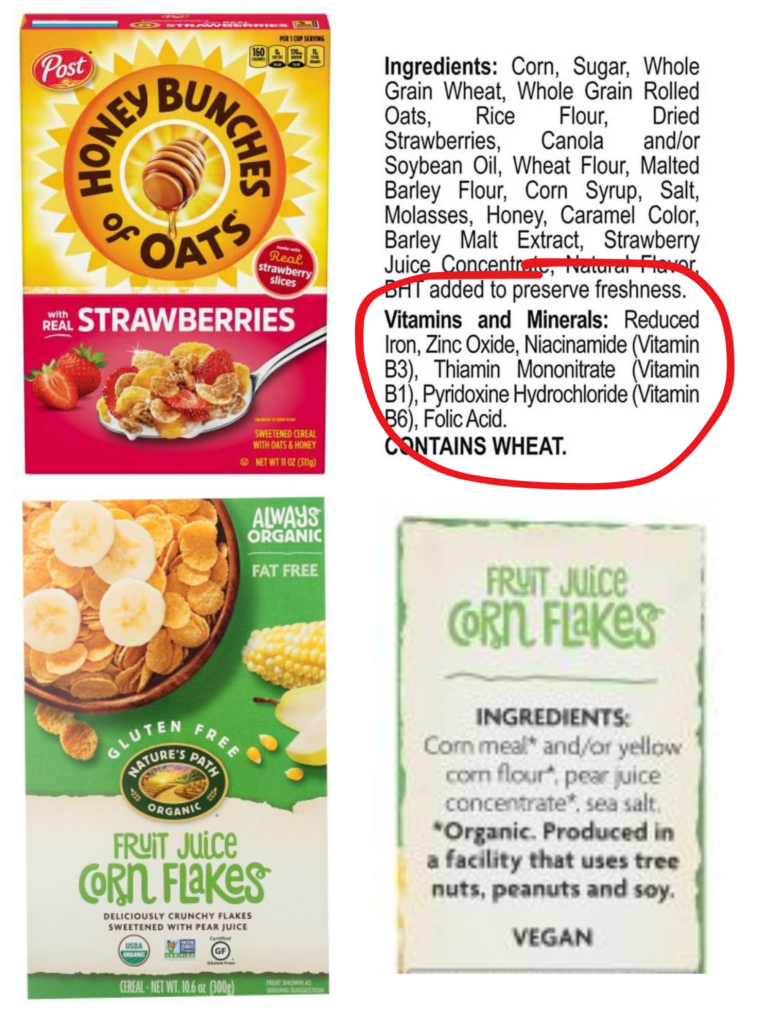
Most grains not required to be fortified are gluten-free and found in many gluten-free cereals and products. This means someone on a gluten-free diet must get these nutrients from other sources to avoid nutrient deficiencies.
The key to a healthy gluten-free diet is to eat plenty of nutrient-dense whole foods. A well-rounded diet of lean proteins, healthy fats, gluten-free whole grains, fiber, and plenty of fruits and vegetables will generally lead to good health outcomes.
You may also consider taking supplements, such as a multivitamin, to ensure you get the essential nutrients you need. Read my list of recommended supplements for celiac disease and gluten intolerance.
Danger #3: Weight Gain and Increased BMI
Many people lose weight when they first go gluten-free for several reasons. For starters, they cut out excessive carbs and sweets, at least at first, which means they eat fewer empty calories.
Also, because gluten is a highly inflammatory food, cutting it out naturally calms inflammation. Inflammation causes redness and swelling, and excessive swelling can mean a person is holding on to 10+ pounds of inflammation weight that will go away as soon as their inflammation dissipates.
Unfortunately, many people new to a gluten-free diet swap gluten-free pizza for regular pizza and gluten-free donuts for traditional donuts, and therein lies the problem.
When they start eating excessive amounts of sweets and carbs, even if they’re gluten-free sweets and carbs, their weight naturally returns… and then some.
One 2022 study found women with celiac disease experienced an increased risk of obesity, diabetes, metabolic disorder, and cardiovascular disease due to a gluten-free diet.

Unfortunately, many gluten-free foods contain more sugar, fat, and calories than their gluten-y counterparts.
One study found that gluten-free bread had a lower protein and higher fat content than gluten-containing bread. Lower protein and higher fat, along with nutrient-devoid rice flours and starches, can lead to unintentional weight gain.
Remember, just because something is gluten-free doesn’t mean it’s healthy.
The way someone on a gluten-free diet can keep their weight consistent or even lose weight is to use packaged foods in moderation and avoid consuming excessive sweets.
Nutrition label reading is just as essential as checking labels for hidden gluten. And above all else, it’s important to remember that gluten-free junk food is still junk food.
Danger #4: Risk of Metabolic Syndrome
In one study, researchers found patients with celiac disease had a higher risk of metabolic syndrome after one year on a gluten-free diet.
Specifically, they found that 22 percent of the participants experienced an increase in their BMI and a four-fold increased risk of developing systemic hypertension after one year on a gluten-free diet.
According to the Mayo Clinic, metabolic syndrome is a variety of conditions that occur together, increasing one’s risk of heart disease, stroke, and type 2 diabetes.
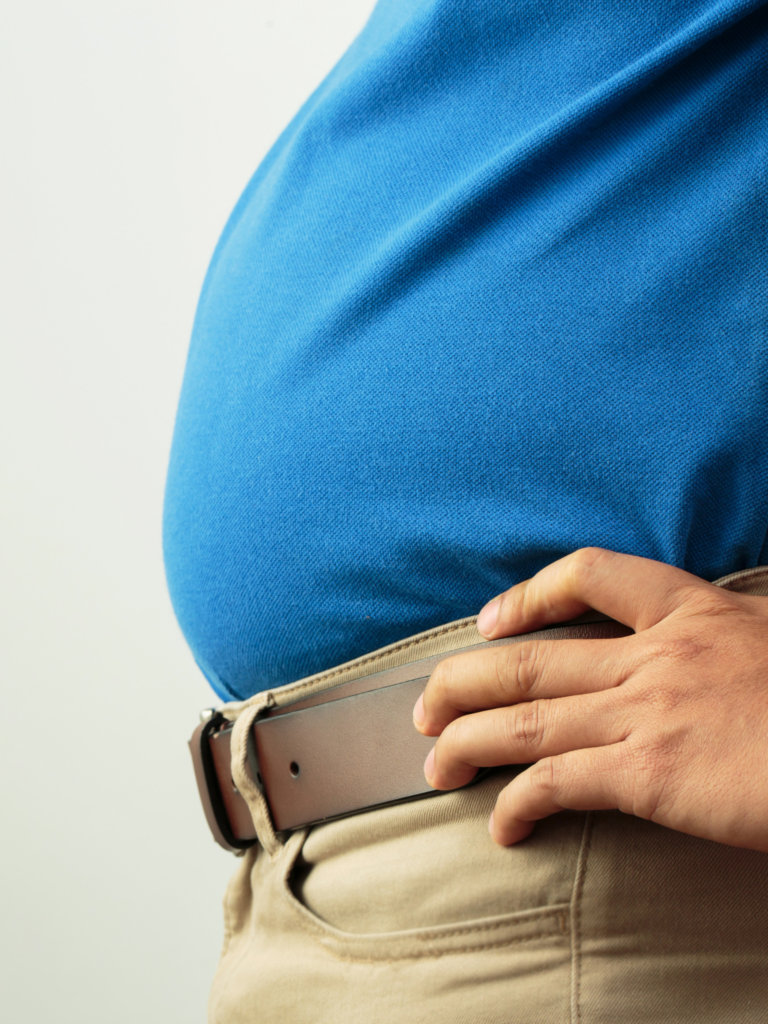
These conditions can lead to increased blood pressure, high blood sugar levels, excess body fat around the waist, and abnormal cholesterol or triglyceride levels.
Anyone new to a gluten-free diet would be wise to seek nutritional counseling. While it may seem “easy” to go gluten-free given all the gluten-free labeled foods at the grocery store, the truth is that healing from celiac disease or gluten disorder takes more than swapping gluten-y junk food for gluten-free junk food and requires you to become wise in your food choices.
Danger #5: Excessive Exposure to Arsenic
Arsenic is found in nature, and humans are exposed to it through their food and water supply. However, arsenic is carcinogenic and can damage the human body.
Rice soaks up arsenic more easily and at higher levels than other foods. Unfortunately, because gluten-free foods rely heavily on rice flour, gluten-free eaters are often exposed to higher levels of arsenic, and a study published in Epidemiology found that individuals following a gluten-free diet may be at risk for increased exposure to arsenic and mercury.
The researchers go on to say that consumption of toxic metals can lead to serious diseases, including but not limited to cardiovascular disease, cancer, and neurological effects.
Mitigating Arsenic Exposure
The Dartmouth Toxic Metals Superfund Research Program offers a few strategies for mitigating arsenic exposure in rice, including reducing rice intake and eating other gluten-free grains such as gluten-free oats, amaranth, millet, buckwheat, corn, flax, teff, and quinoa.
The researchers also suggest using rice known to contain lower levels of arsenic, such as quick-cooking rice, instant rice, sushi rice, and basmati rice from India, Pakistan, or California.
They also say that rinsing rice before cooking can reduce arsenic residue and that cooking rice like pasta and draining the excess water before eating will cut the arsenic exposure from rice in half.
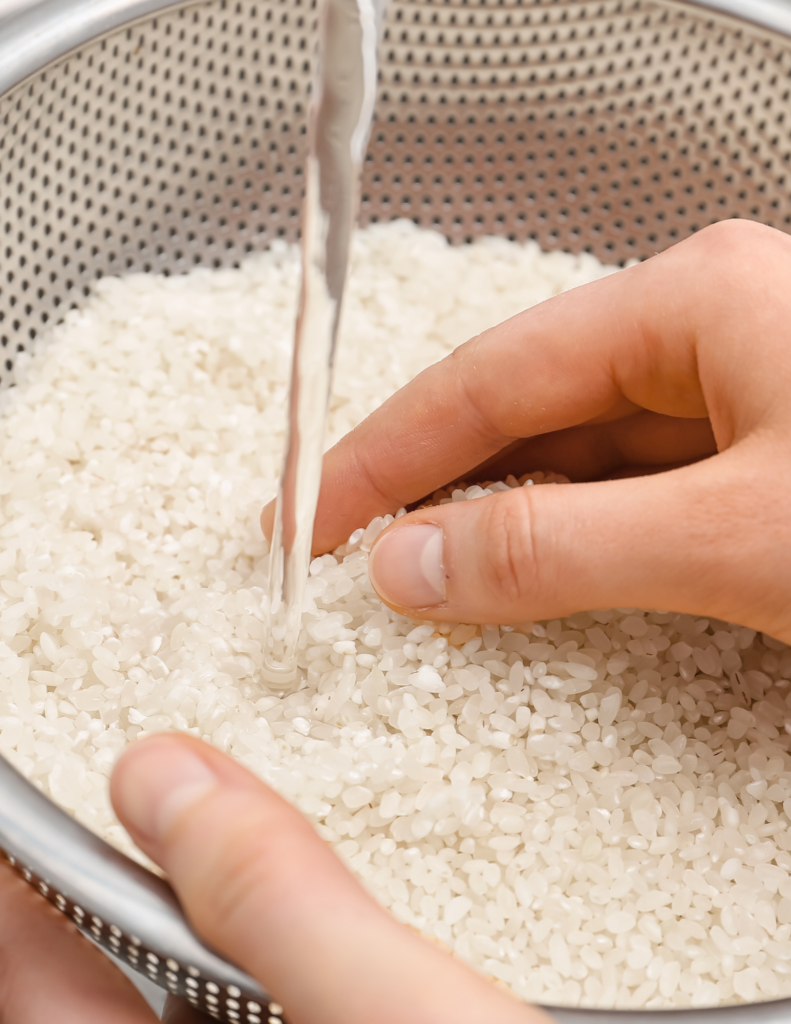
Is Gluten-Free Worth It?
Is a gluten-free diet worth implementing, especially given its associated dangers?
Overwhelming evidence suggests that gluten causes inflammation in all humans, not just those with celiac disease and non-celiac gluten sensitivity. Continuing to eat gluten can lead to a slew of annoying, painful symptoms along with a long list of life-threatening conditions.
No one wants to live in a stage of morbidity for years before dying. This is why keeping preventable diseases at bay is essential to living long and dying fast (at a ripe old age, that is!). Giving up gluten may be the magic bullet that helps one live a long, healthy life.
Above all else, there’s a right and wrong way to implement a gluten-free diet.
A gluten-free diet that relies heavily on packaged foods, junk foods, processed foods, and sweets will deter healing and can lead to fiber and nutrient deficiencies, weight gain, increased metal exposure, and a slew of diseases.
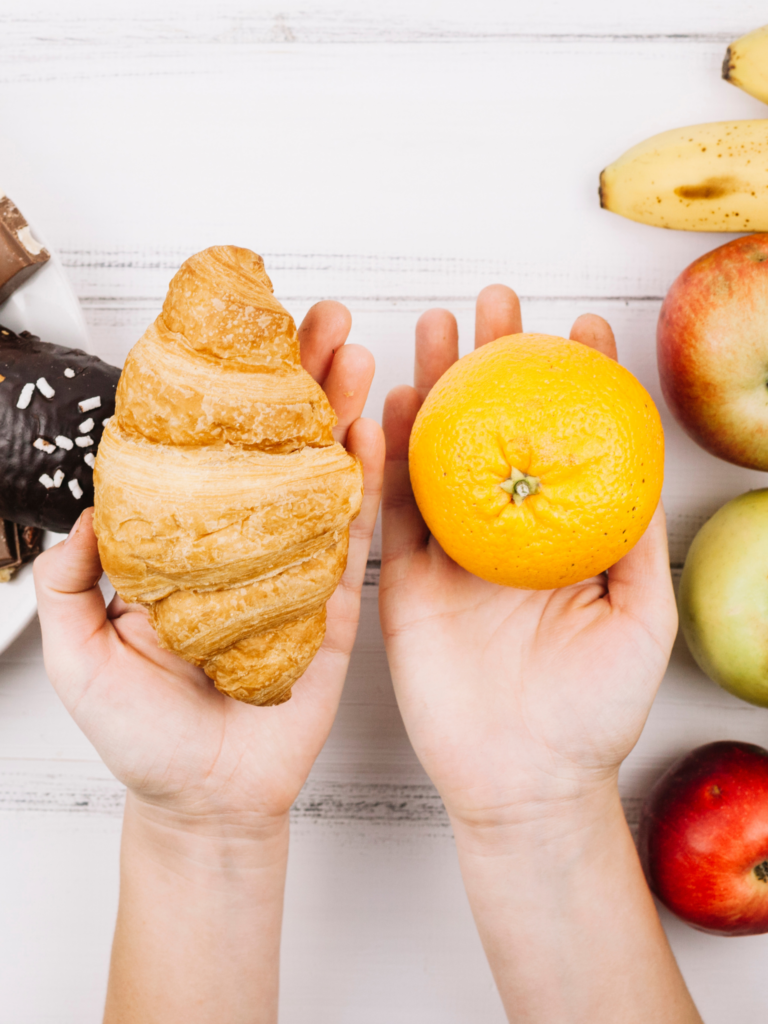
However, a gluten-free diet centered on fresh, whole, nutrient-dense, and naturally gluten-free foods will deter disease and promote health and longevity.
When going gluten-free, seek nutritional counseling from a trained health coach, nutritionist, integrative nutrition dietician, or doctor. I also highly recommend enrolling in my SIGNATURE Gluten-Free Course to jumpstart a healthy gluten-free diet and get it right from the start. My SIGNATURE course is the #1 course for people with celiac disease and gluten intolerance.
Additional Reading
- STOP! Don’t Go Gluten-Free Until You Read This Article
- The Benefits of Probiotics for Celiac Disease (and a list of gluten-free probiotic brands)
- 10 Facts Your Doctor Doesn’t Know about Celiac Disease and Gluten Sensitivities
- Beginners Guide to Gluten-Free
- Supplements for Celiac Disease and Gluten Intolerance
- What Happens If You Eat Gluten With Celiac Disease?
- 12+ Must-Read Books about Celiac Disease and Gluten-Free Living
- 10 Naturally Gluten-Free Foods Every Celiac Should Be Eating
- 200+ Foods You Can Eat on the Gluten-Free Diet

I’ve been dx CD for 24 years. I recently started using MyFitnessPal to lose a few pounds. I had figured out some of this but have been really well educated on just how much fat is in GF foods. This will be very helpful. I can’t digest beans so avoid that healthy food source and am not getting enough protein, fiber, or carbs. Too high on sugar and fat, as well.